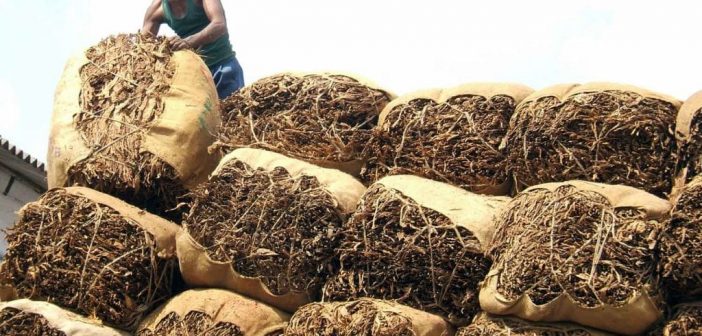India, a land steeped in diverse agricultural traditions, holds a significant position in the global tobacco trade. From raw leaves to finished products, Indian tobacco finds its way to markets across the globe, contributing substantially to the nation’s foreign exchange earnings. This article delves into the intricacies of India’s tobacco exports, exploring types, destinations, and the complex interplay of economic and social factors surrounding this controversial commodity.
A Dominant Player: India’s Ranking in Tobacco Exports
India occupies the enviable position of the world’s second-largest exporter of raw tobacco, trailing only Brazil. In 2022, India exported a staggering $917 million worth of raw tobacco, accounting for approximately 6% by volume and 0.7% by value of the global tobacco trade. This dominant position can be attributed to several factors, including:
- Favorable Growing Conditions: India boasts ideal climatic conditions for cultivating tobacco, particularly in the southern states of Andhra Pradesh, Telangana, and Karnataka. These regions offer fertile soil and abundant sunshine, fostering high-quality tobacco production.
- Competitive Pricing: Indian tobacco is known for its competitive pricing compared to other major producers. This affordability makes it attractive to budget-conscious buyers in various international markets.
- Variety of Tobacco: India produces a diverse range of tobacco varieties, catering to different tastes and preferences. Flue-cured Virginia (FCV) tobacco, prized for its mild flavor and aroma, is the dominant export variety, accounting for over 80% of India’s tobacco exports.
Beyond Leaves: Finished Goods on the Export Map
While raw tobacco remains the core of India’s tobacco exports, the landscape extends beyond loose leaves. Finished tobacco products, such as cigarettes, bidis (indigenous Indian cigarettes made from unprocessed tobacco rolled in tendu leaves), and chewing tobacco, are also finding their way to international markets. The export value of these finished goods, though lower than raw tobacco, signifies a growing trend towards diversification within the Indian tobacco export industry.
Key Export Destinations: A Global Reach
India’s tobacco exports have a truly global reach, spanning continents and catering to diverse markets. Here’s a glimpse into some of the top destinations for Indian tobacco:
- Belgium: Emerging as the biggest importer of Indian tobacco in 2022, Belgium accounts for roughly 17% of India’s total tobacco exports. The strategic location of Belgium facilitates further distribution of Indian tobacco to other European markets.
- The Philippines: The Philippines ranks as another major importer, consuming approximately 12% of India’s tobacco exports. The popularity of cigarettes made from Indian tobacco can be attributed to their affordability and distinct flavor profile.
- Egypt: Egypt is a significant consumer of Indian tobacco, importing around 13% of the total exports. The thriving tobacco industry in Egypt utilizes Indian tobacco for blending purposes.
- Other Major Markets: Several other countries, including Russia, South Korea, the United Arab Emirates, Nepal, and Germany, are also prominent importers of Indian tobacco.
Economic Significance: Balancing Revenue with Public Health Concerns
Tobacco exports contribute significantly to India’s foreign exchange earnings. Estimates suggest that the tobacco industry contributes around 4% of the country’s total agricultural exports and over 10% of the total excise revenue collection. This economic importance, however, is counterbalanced by the well-documented public health concerns associated with tobacco use.
The Future of India’s Tobacco Exports: Challenges and Opportunities
The future of India’s tobacco exports is likely to be shaped by a complex interplay of factors. On one hand, growing global awareness about the health risks associated with tobacco use could potentially lead to a decline in demand. On the other hand, technological advancements in tobacco cultivation and processing could enhance India’s competitiveness in the international market.
Furthermore, the rise of anti-smoking regulations in developed countries could prompt Indian exporters to focus on emerging markets with less stringent regulations. Additionally, exploring the potential of alternative tobacco products, such as smokeless tobacco, could offer new avenues for export growth.
Conclusion: A Sustainable Path Forward
India’s position as a leading tobacco exporter presents both economic opportunities and public health challenges. Moving forward, a balanced approach that prioritizes economic benefits while mitigating the health risks associated with tobacco use is crucial. This can be achieved through stricter regulations on tobacco products, promoting public health awareness campaigns, and exploring alternative, less harmful tobacco cultivation practices.





